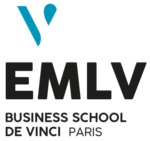Bastien Nivet, Enseignant chercheur en Géopolitique & Sciences Politique à l’EMLV (Ecole de Management Léonard de Vinci), nous parle de l’importance pour les managers d’avoir une culture européenne et géopolitique.

05:21
The Triple Bottom Line (TBL) concept emphasizes that business success should not be measured solely by financial performance. It includes social and environmental impacts alongside profit. Additionally, dynamic capabilities help firms adapt to rapid environmental changes and enhance sustainability performance. Previous studies have shown that TBL initiatives can also improve sustainability performance. However, no research has investigated how dynamic abilities and TBL initiatives jointly impact B2B firms’ sustainability performance in the post-COVID-19 period. This study aims to examine the implications of dynamic capabilities on TBL performance, particularly from a B2B marketing perspective. By developing and validating a conceptual research model, it contributes to the literature related to dynamic capability view, TBL, and sustainability.
CHAUDHURI Ranjan - EMLV |
- Recherche
- Développement Durable et RSE, Marketing, Vente et Communication, Série Spécial Covid



